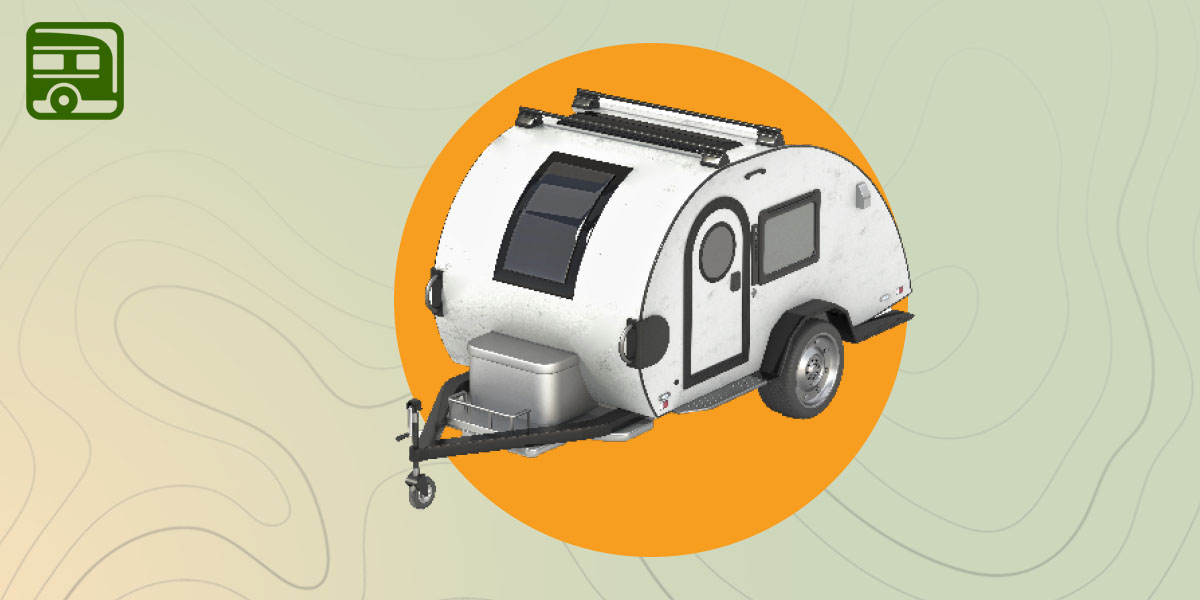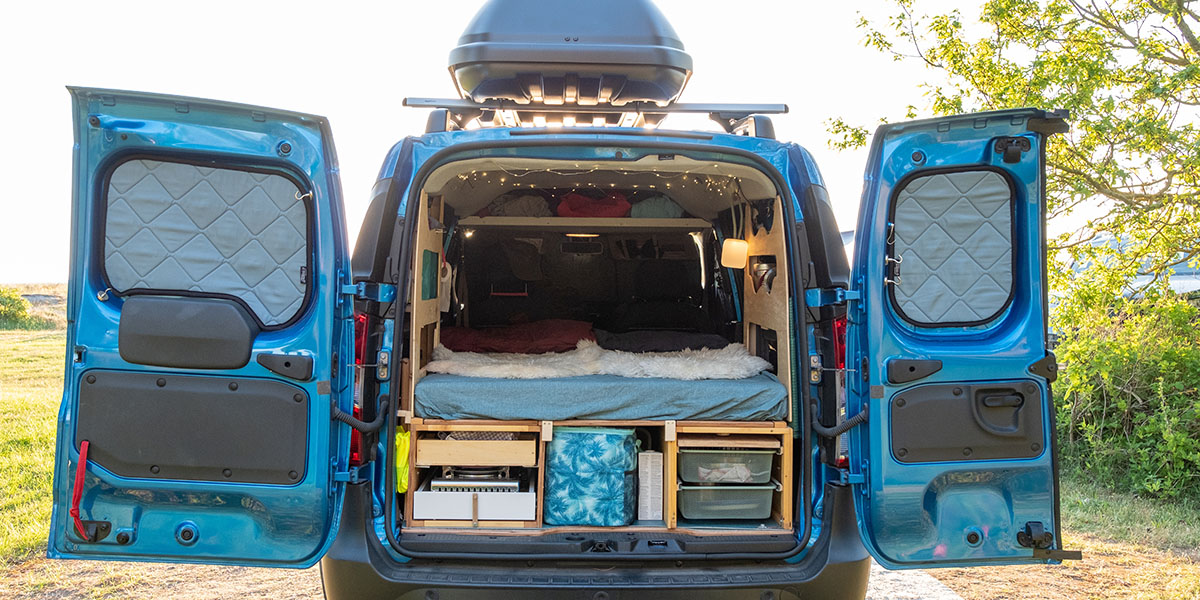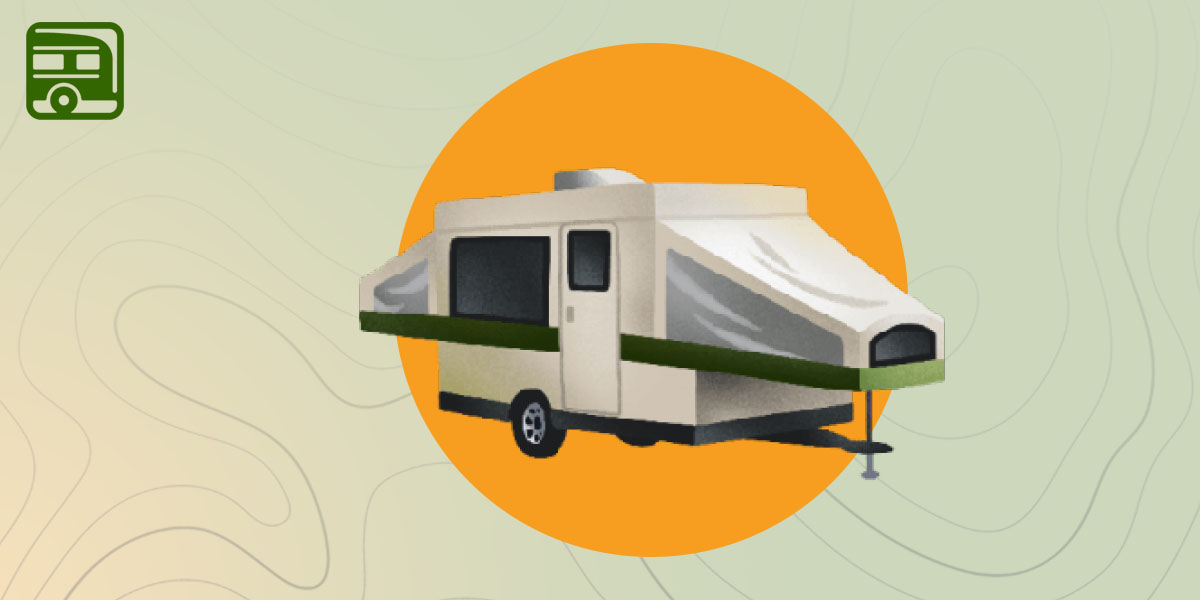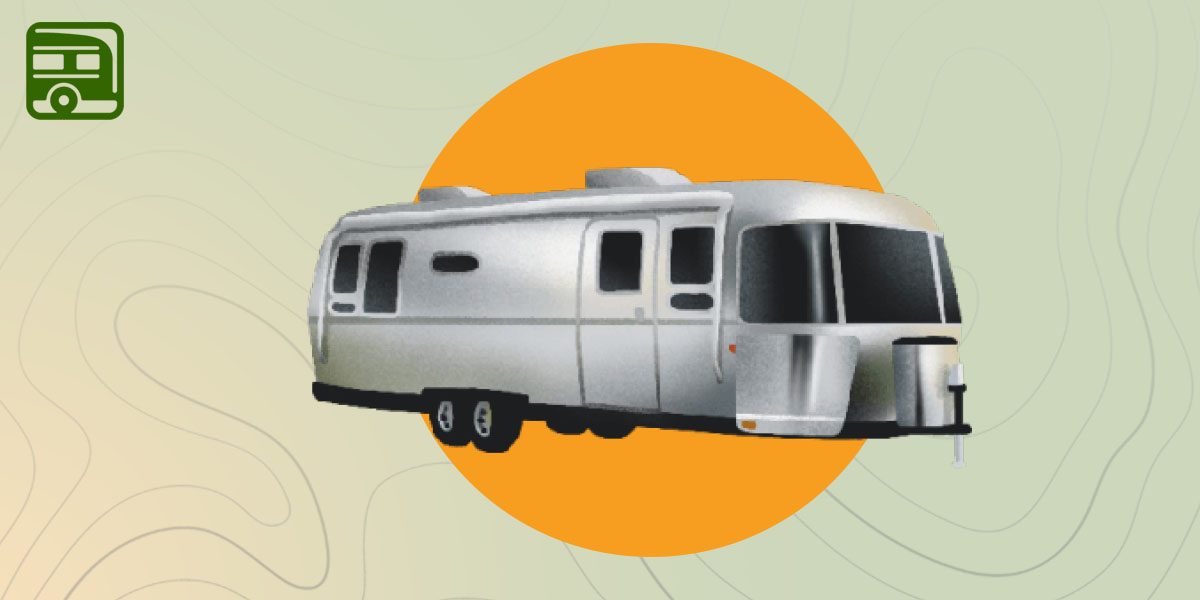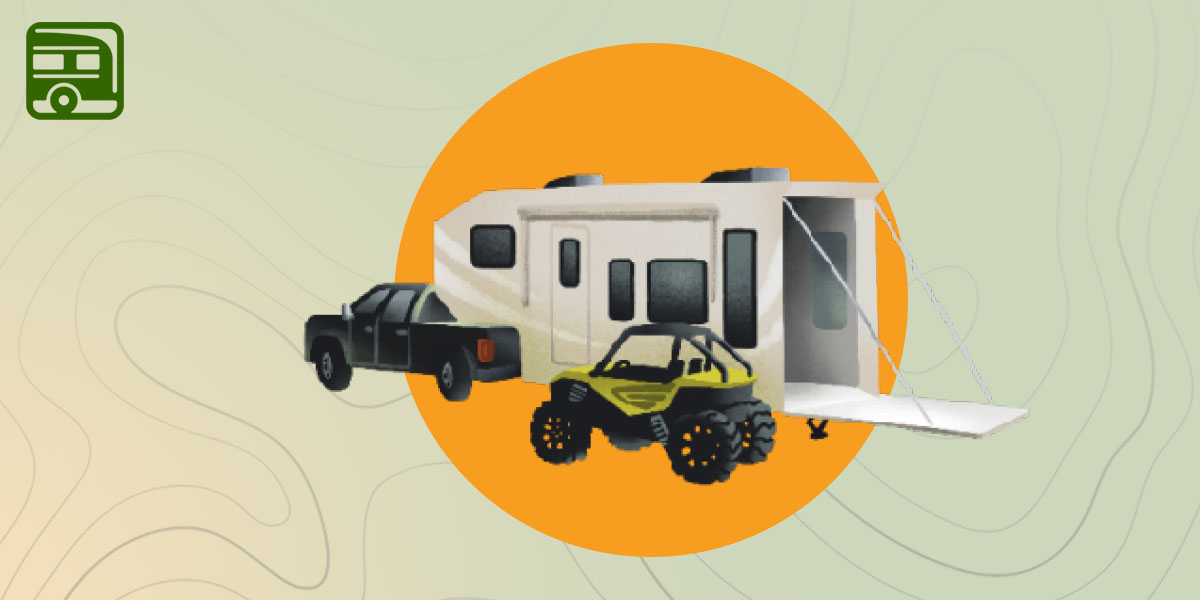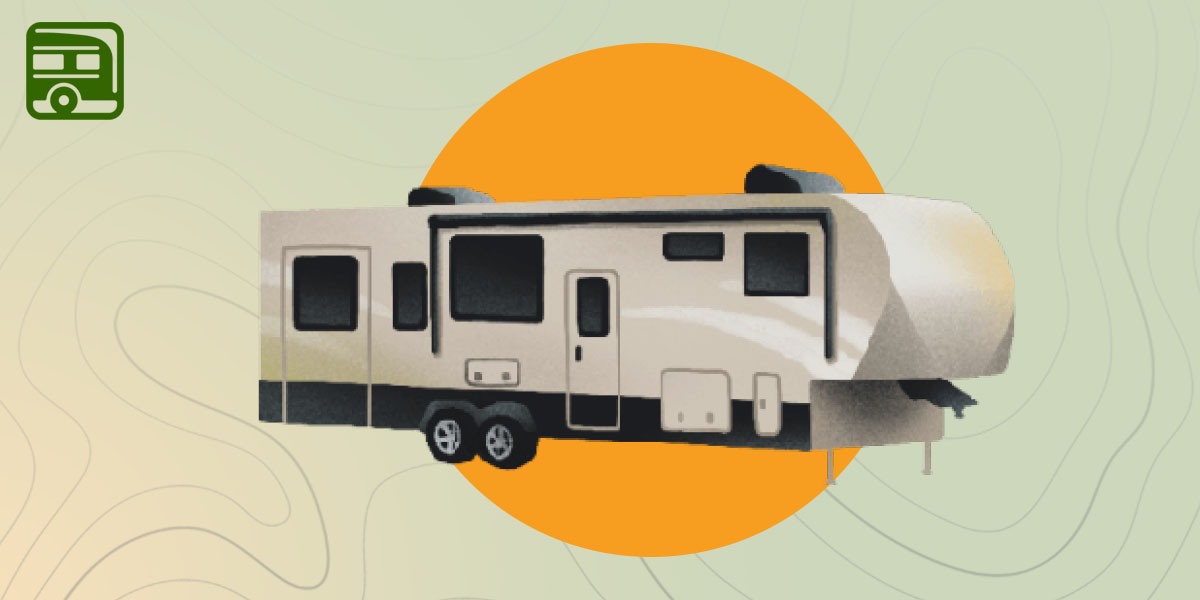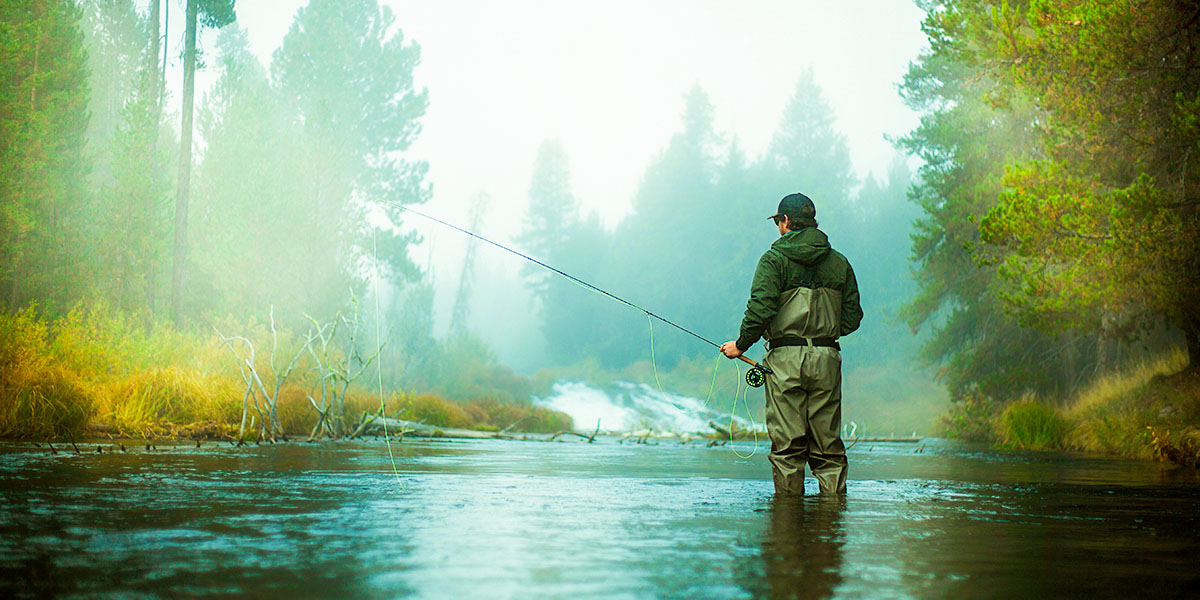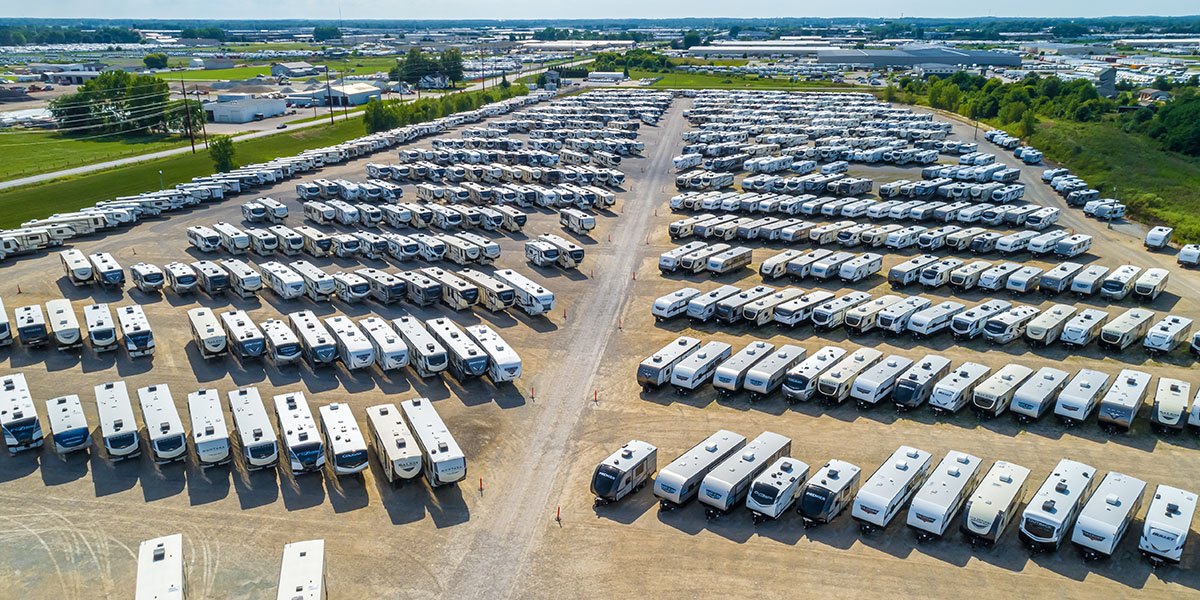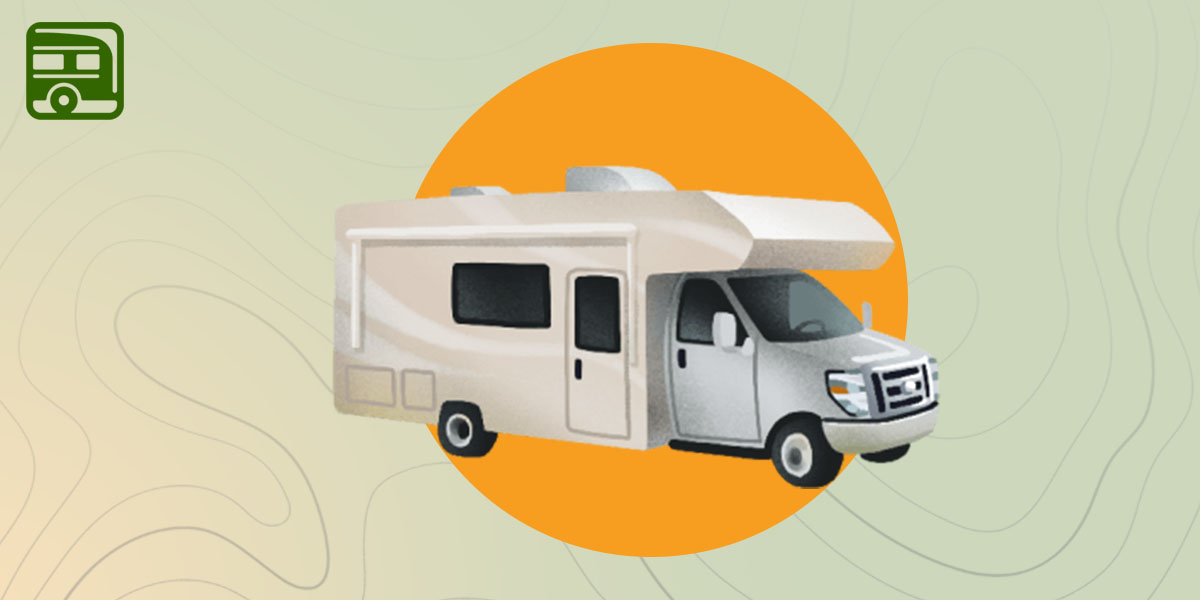Of all the RV types, teardrops just might get the highest overall marks on style. Teardrop trailers a chic bridge between ultrafunctional pop-up campers (which tend to be not much to look at) and travel trailers (which are larger, harder to move, park, store, and more expensive to buy).
Even so, don’t let their stylish tendencies deceive you. The best teardrop trailers pack functionality into every bit of their square footage — just like every other RV class. They just do it in a smaller package.
But even so, you might wonder: What makes a teardrop a teardrop? Well, let’s start there.
Size and Space
Teardrop trailers are the smallest class of towable RVs, typically ranging from 8 to 20 feet long. As you might have imagined, they are named for their prevailing shape. Like pop-up trailers, their lightweight design makes them easy to tow with a variety of vehicles. In some cases, that even includes compact cars and small SUVs. Most teardrop trailers weigh between 500 and 3,500 pounds, depending on the size and materials used to build them. This makes them accessible to a broader range of travelers who may not own a truck or heavy-duty SUV.
Despite their small size, teardrop trailers are cleverly designed to maximize space. The interior typically features a sleeping/lounging/living area large enough for two people. Some models may offer slightly larger sleeping quarters. Many teardrops also come with an outdoor kitchen at the rear of the trailer, accessible via a hatchback-style door. This kitchen area often includes a stove, a small sink, and storage space for cooking essentials. More expensive models typically come with cleverer additions of space, like “annex rooms” or attachable, soft-walled, tent-like options.
Interior Layout and Amenities
The interior of a teardrop trailer is designed to efficiently maximize space by the inches. The main feature is usually the sleeping area, which can accommodate two adults comfortably. While there isn’t much room for anything else inside, the cozy space often includes shelving or small cabinets for storage, as well as ventilation options like ceiling fans or small windows.
The outdoor kitchen is a delicious hallmark of most teardrop trailers. By placing the kitchen at the rear, manufacturers free up interior space for sleeping and storage. These spaces typically include a countertop, a two-burner stove, a sink (sometimes, thought not always, with a small water tank), and storage for cooking utensils, dishes, and food. Higher-end models may even include a small refrigerator or cooler. Some teardrops offer space for an exterior awning to extend the living area outdoors.
While amenities are minimal compared to larger RVs, teardrop trailers prioritize lightweight design and ease of towing. Many teardrops are equipped with electrical hookups, allowing campers to use small appliances and charge devices. Some models also feature solar panels for off-grid camping.
Storage and Utilities
Teardrop trailers are designed with efficiency in mind, so storage space is limited but cleverly utilized. Small cabinets, under-bed storage, and rooftop racks help maximize the available space. External storage compartments can also be added to larger models, allowing for more gear or camping equipment to be stored.
The utility systems in teardrop trailers are basic, focusing on essential comforts without adding excess weight. Most models come with a small freshwater tank for the outdoor kitchen sink, and some offer electrical systems powered by batteries or solar panels. Heating and air conditioning systems are rare, but not unheard of. And some models offer portable options or hookups for small fans or heaters.
Towing and Performance
One of the key advantages of teardrop trailers is their lightweight, aerodynamic design, which makes them easy to tow. Many models weigh less than 1,500 pounds, meaning they can be towed by smaller vehicles even including compact cars, crossovers, or smaller SUVs. The low profile and streamlined shape of a teardrop trailer reduce wind resistance, improving fuel efficiency and making it easier to maneuver.
Teardrop trailers are also far easier to park and store than larger RVs. Their compact size allows them to easily squeeze into tighter campsites and storage spaces, or any other small, flat spot of land in the case of boondocking. Almost all can be stored in a standard garage. For campers who enjoy boondocking or exploring off-the-beaten-path locations, teardrops are ideal because they can be towed on more rugged terrain than many larger RVs.
Durability and Longevity
Teardrop trailers are built to last, with many models using high-quality materials like aluminum, fiberglass, or durable wood. These materials help protect against the elements while keeping the trailer lightweight. Regular maintenance, like resealing joints and checking for wear, can significantly extend the life of a teardrop trailer.
With fewer complex systems than larger RVs, and hard-style walls that are more durable than pop-ups, teardrop trailers are easier to maintain, reducing the likelihood of expensive repairs. Their simple design ensures that they are reliable for long-term use, whether for occasional weekend getaways or more frequent camping adventures.
Cost and Investment
Teardrop trailers are more affordable than larger RVs, making them an attractive option for budget-conscious travelers. The cost of a new teardrop trailer can vary depending on the size, materials, and features, but here’s a general breakdown for 2024.
- Entry-Level Models. Typically start around $8,000 to $15,000. These basic models deliver essential sleeping and kitchen spaces without extra features.
- Mid-Range Models. Prices range from $15,000 to $30,000. These models often include more durable materials, upgraded kitchens, and extra storage or utility options like solar power.
- High-End Models. Luxury teardrop trailers can cost upwards of $30,000. These models feature high-end finishes, more sophisticated kitchen setups, more space, and additional features like built-in refrigerators, heating systems, or off-road capabilities.
Target Audience
Teardrop trailers are perfect for solo travelers, couples, and outdoor enthusiasts who value simplicity and adventure. They are ideal for those who want to camp in remote locations or national parks without needing the amenities of a large RV. Additionally, teardrop trailers appeal to travelers looking for an easy-to-tow, fuel-efficient option that doesn’t require a heavy-duty tow vehicle.
A Small, Stylish Upgrade
While pop-ups are the cheapest entry-level gateway into easy RVing, teardrops are an upgrade in nearly every way. They’re more durable, and can sometimes provide more space and higher utility. They also cost half or less than the smaller travel trailers, and a fraction of the larger units. This makes them a stylish entry point into the road-warrior life, especially for those who can afford to bypass the tent-like popups.
Whether you’re planning a weekend getaway or a longer road trip, teardrops provide the freedom to explore the great outdoors without sacrificing comfort or convenience, at a price point that makes them a great investment for adventurers who value both form and function.
Research Other Types of RV
Teardrops are a great entry-level RV for newbies looking for a fun and stylish first-time RV. But what if you’re family needs a bit more room? And how different are motorized RVs from their towable cousins? We got you. Empower your RV-buying journey with knowledge. Learn more about the other different types of RV with the following articles.
Class A Motorhomes: An RV Buyer Basics Guide
Class B Motorhomes: An RV Buyer Basics Guide
Class C Motorhomes: An RV Buyer Basics Guide
Fifth Wheels: An RV Buyer Basics Guide
Toy Haulers: An RV Buyer Basics Guide
Travel Trailers: An RV Buyer Basics Guide
Pop-Up Campers: An RV Buyer Basics Guide
Teardrop Trailers: An RV Buyer Basics Guide
Truck Campers: An RV Buyer Basics Guide
Fish Houses: An RV Buyer Basics Guide
